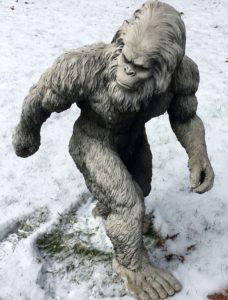 The search continues for any hard evidence of the mysterious yeti, nine DNA samples supposedly coming from the beast have turned out to be from much more mundane sources.
The search continues for any hard evidence of the mysterious yeti, nine DNA samples supposedly coming from the beast have turned out to be from much more mundane sources.
Science Magazine reports on DNA tests conducted on samples found within the Himalayas and Tibet, all nine of which were reported to come from the mythical yeti. Unfortunately for cryptic enthusiasts (though fortunate for anyone hiking in the region) scientists have confirmed that these samples have almost certainly not come from any ape-like beasts roaming the snowy landscape.
Based on findings from previous DNA samples collected in Bhutan and India, scientists like Charlotte Lindqvist, evolutionary biologist at the State University of New York in Buffalo, began to speculate the yeti may just be some new species of bear native to the region; specifically, a cross between the polar bear and the native brown bear. This theory began to emerge after researchers began to study the mitochondrial DNA strands of the samples, revealing a resemblance to those of the polar bear.
These same tests were applied to the nine “yeti” samples, as well as a variety of other creatures known to live in the area, making for a total of 24 samples in all. The results were somewhat expected, with eight of nine samples revealed to be from native bear species, the ninth being that of a dog.
Despite thoroughly debunking any of the samples as being from a yeti, the study still offered some insight into animal genetics and collected some valuable information, such as the first full mitochondrial genomes for the Himalayan brown bear and Himalayan black bear. This could greatly help in the study of these two bears, identifying differences from their more common variants and locating any common ancestors.
Other scientists hope to put this new information to work in further study of the two animals, including examining the nuclear DNA of each species. While mitochondrial DNA only contains genes inherited from a female parent of an animal, the nuclear DNA contains genes from both. Some speculate that there may be more evidence of hybridization between the two species if both these forms of DNA are examined this thoroughly.
Regardless, though, any researchers making the trip out to perform this work can rest assured that they’ll likely not have to worry about encountering a yeti, though probably should carry some bear spray with them just to be safe.











